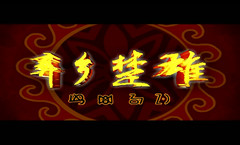Ethnicity
( chinadaily.com.cn )
Updated: 2013-06-26
Yunnan is recognized for its ethnic diversity. It has the highest number of ethnic groups among all provinces and autonomous regions in China. Among the country's 56 recognised ethnic groups, twenty-five are found in Yunnan. Some 38% of the province's population are members of minority groups, including the Yi, Bai, Hani, Tai, Dai, Miao, Lisu, Hui, Lahu, Va, Nakhi, Yao, Tibetan, Jingpo, Blang, Pumi, Nu, Achang, Jinuo, Mongolian, Derung, Manchu, Shui, and Buyei. Several other groups are represented, but they live neither in compact settlements nor do they reach the required threshold of five thousand to be given official status of being present in the province. Some groups, such as the Mosuo, who are officially recognised as Naxi, have in the past claimed official status as a national minority, and are now recognised as Mosuo people.
Ethnic groups are widely distributed in the province. Some twenty-five minorities live in compact communities, each of them have a population of more than five thousand. Ten ethnic minorities live in border areas and river valleys including the Hui, Manchu (the Manchu, remnants of the Qing administration, do not live in compact settlements and are in all respects indistinguishable from the Han), Bai, Naxi, Mongolian, Zhuang, Dai, Achang, Buyei and Shui, with a combined population of 4.5 million; those in low mountainous areas are the Hani, Yao, Lahu, Va, Jingpo, Blang and Jino, with a combined population of 5 million; and those in high mountainous areas are Miao, Lisu, Tibetan, Pumi and Derung, with a total population of four million.
An oft-repeated proverb tells the story of three brothers who were born speaking different languages: Tibetan, Naxi, and Bai. Each settled in different areas of Yunnan and Tibet, the high area, the middle area, and the low area respectively.

